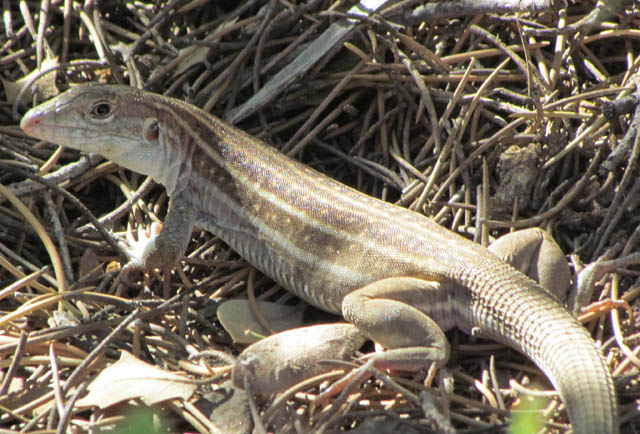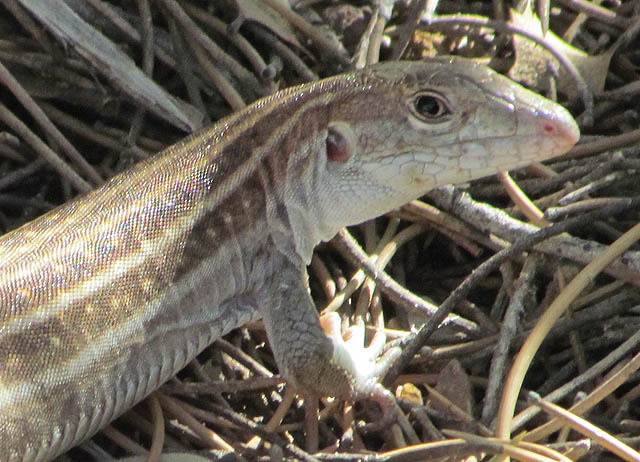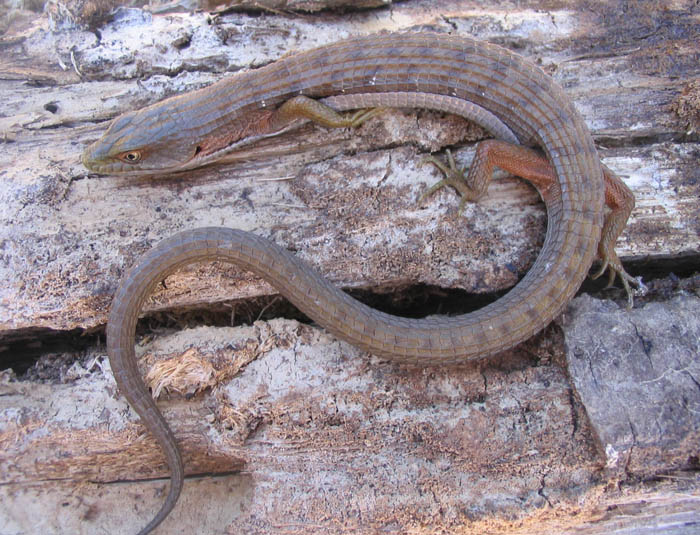
Are you ready to spend a week in sunny California? Let’s see what wildlife is stirring at this time of year.

First up is this Coast Range Fence Lizard. Fence Lizards have overlapping, pointed scales and are part of a large family of reptiles known as Spiny Lizards. They are also commonly called “swifts” because of their speed.

Largely based on temperature, individuals can lighten or darken considerably; when individuals darken, their markings become difficult to see.

This lizard is conspicuous and common. It’s usually found on or near the ground, in rock and wood piles, tree trunks, and the lower branches of shrubs. And of course, basking on wooden fences.
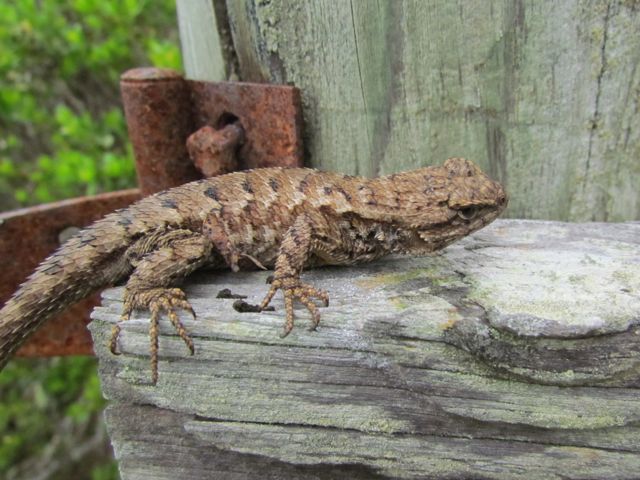
Males have iridescent blue throats and bellies and do “pushups” flash the bright color to court females or defend their territories from males.

Adult Coast Range Fence Lizards measure about six inches in total length. They seem to prefer elevated basking sites where they can keep an eye on their territory and watch for insects. Here’s a couple of babies that hatched last year.
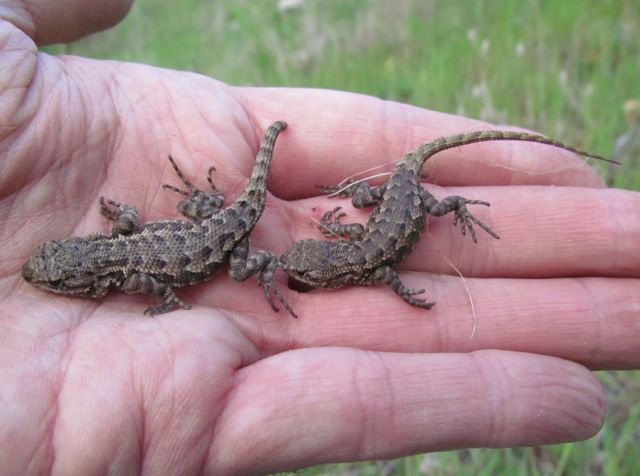
These reptiles may be beneficial to man in a way other than eating many insects. A protein in their blood kills the bacterium that causes Lyme Disease. Further studies of this reptile may result in a eventual cure to Lyme Disease.
Third Eye Herp
E-mail


